As an Amazon Associate I earn from qualifying purchases.
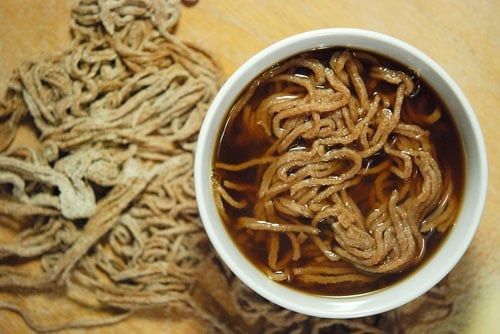
Making stocks and broths are among the core skills of any good cook, and it is a labor or love I embrace wholly. As a hunter, angler and a gardener, I can often make a first-class stock solely with ingredients I’ve grown, caught or shot. This to me is deeply satisfying. Venison stock is one of my mainstays throughout the year.
While some will make a stock without vegetables, I am not among them. They add so much to the final flavor of a stock and can transform it from an additive into a full-fledged broth suitable for drinking on cold days. Incidentally, while I use stock and broth interchangeably, technically a stock is a base and a broth something you can serve on its own; generally a broth is more flavorful and better seasoned than a stock.
Other than the venison, my essentials are: Onions or leeks, carrots, celery, bay leaves, parsley. I will add other herbs as appropriate, most often rosemary and thyme, and sometimes juniper berries. Secret weapon for venison stock: parsnips. Their sweetness brings a lot to the party.
First step is roasting the bones. I like darker, fuller stocks and this is what does it. I roast my deer bones at 400°F for an hour or so, until they are yummy-looking. Incidentally, meat makes better broth, so add some if you can. Secret trick: Save all the gnarly, sinewy bits and trim not even fit for the grinder and roast them along with the bones; don’t include bloodshot meat, though.
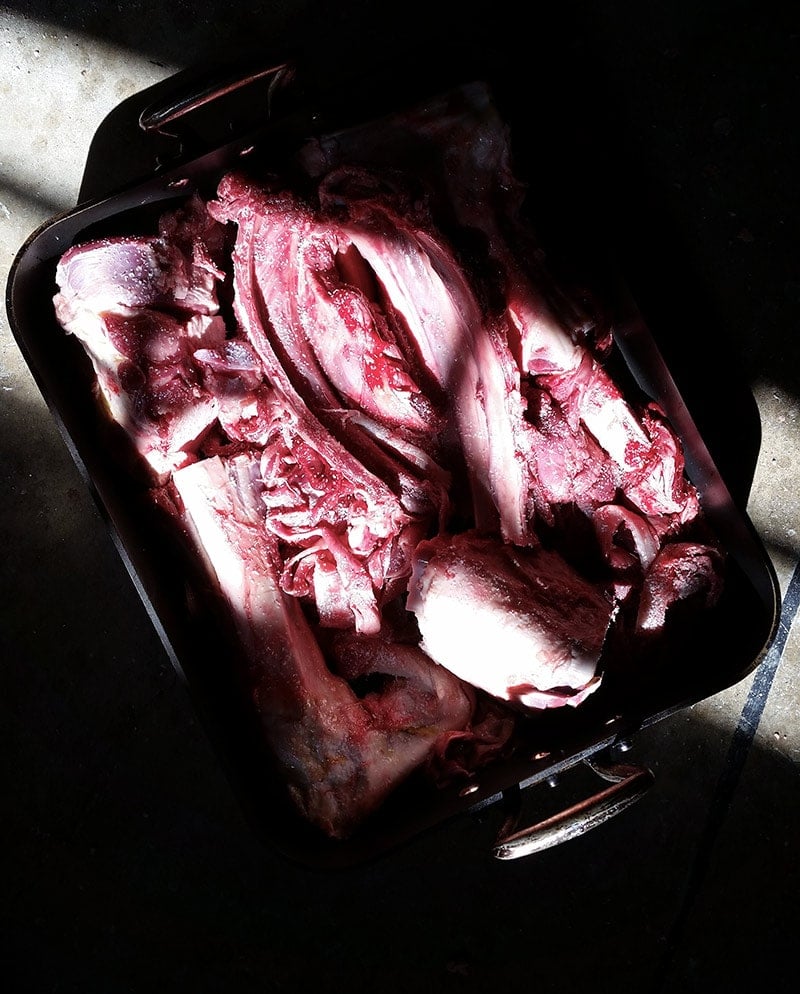
Next cram your bones and trim into the stockpot and cover with cold water by several inches. Cold water will you produce more collagen, and it’s collagen from the joints and cartilage and skin that builds body in your stock by making it thicker than water. You only get this by letting the water heat gradually. Secret trick: Go to the butcher and buy a calf’s or pig’s foot and add it to the pot (don’t roast it, though). It will add a huge amount of body to your broth.
Bring the broth to a boil and skim off any scum that floats to the surface. After the surface is clear, reduce the heat to a bare simmer. You want it to shimmy, not roil, not even bubble too much. A boiled stock will turn cloudy, and the higher temps can extract bitter flavors from the bones. Let it do this for several hours. How long? Up to overnight.
After the meat has infused the water to your liking — 4 hours is a minimum for me — add your veggies, roughly chopped. Remember that old, crappy veggies will not improve by cooking them. That said, the ends of things make great stock, as do onion skins, which will help turn a broth a lovely brown. Stir in your nice vegetables and let it cook for another 90 minutes to 2 hours. No more.
After this, strain everything out. Grab all the big stuff with tongs first, then set a paper towel into a fine mesh sieve. Ladle your venison stock through this into a large bowl or plastic bin. Is all of this necessary? Yes. Unless you want a mucky, cloudy stock. And it is more than aesthetics: The impurities are just that – impure, and add off-flavors to your otherwise wonderful brew.
Once your stock is strained, clean the stockpot or pour the strained liquid into another one. Now you can reduce it if you want to.
This is also the time you can salt the stock. Stock gets saltier the longer you cook it down because salt does not evaporate with the water. So add it close to the end and you will know what you’re getting. If you’re doing demi-glace, don’t salt at all.
All of this takes time, but not a lot of it is active. And the process is comforting to me, as much so as the reward.
Venison Broth
Ingredients
- 4 pounds venison bones, with some meat on them
- 4 tablespoons olive oil
- Salt
- 1 tablespoon crushed juniper berries (optional)
- 2 tablespoons fresh rosemary
- 1 tablespoon crushed black peppercorns
- 1 tablespoon dried thyme
- 4 bay leaves
- 1 medium onion, chopped
- 2 large carrots chopped
- 2 celery sticks chopped
- About 1/2 of a bunch of parsley chopped
Instructions
- Coat the bones with olive oil and salt well, then roast in a 400°F oven until brown. If you can stand it, keep some meat on the bones — trim and shanks are ideal for this. It will make a better broth. Put the bones in a large stockpot. I saw the bones into large pieces with a hacksaw; this lets me fit more bones into the pot, again, making a richer broth. Cover with water and bring to a simmer over medium-high heat.
- Skim the froth that forms on the surface and simmer very gently for at least 4 hours; I let it go overnight. You want the broth to steam and burble a little, not roil.
- Add the remaining ingredients and simmer for another 2 hours.
- Using tongs, grab out all the bones and large bits and discard. Set a paper towel in a fine-mesh sieve that is itself set over another large pot. Ladle the venison broth through the cheesecloth-lined sieve. Discard the dregs in the broth pot, with will be loaded with sediment and other bits.
- Add salt to taste to the clarified broth and pour into quart jars and freeze (or pressure-can — you cannot can broth in boiling water). If you freeze, leave about 2 inches of space at the top of the jar or the jars will crack when the broth freezes. Use within a year.
Notes
Nutrition
Nutrition information is automatically calculated, so should only be used as an approximation.

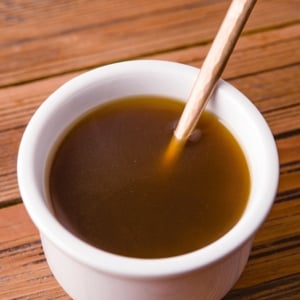

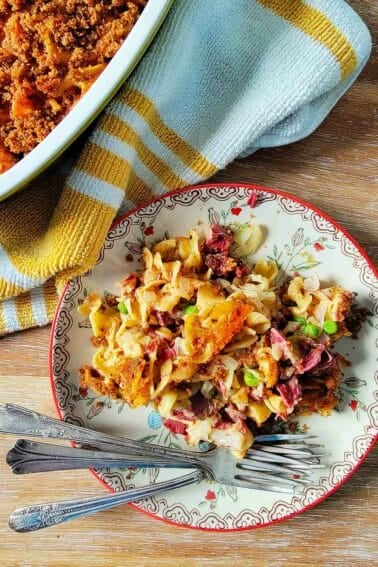
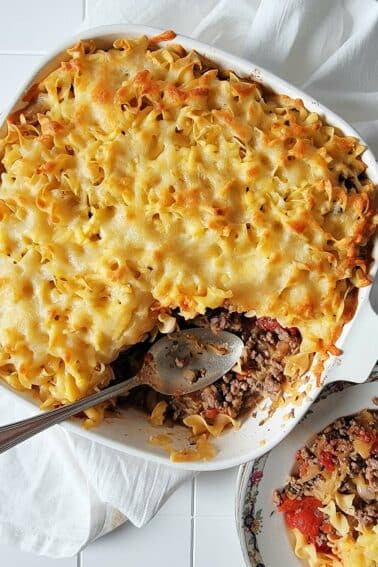
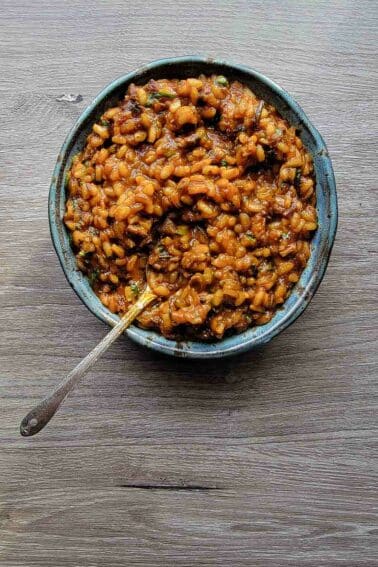
Hi there, to save time, can I do this in an instant pot or pressure cooker?
Kate: Yes, but it will not be very clear. The high temperatures will cloud the stock. But other than aesthetics, it will work.
Hi Hank! Have you ever made a broth with bear bones? Would you use this same approach?
Lindy: Yes, once. It was fine. Very much like venison broth, and yep, I used the same procedure.
Hey Hank, we bought your book for a friend and covet it. It will soon need to be on our shelf. We processed a moose the other day and we’re going to make bone broth with the bones tomorrow. What are your thoughts/experience with adding Apple cider vinegar to the water? Heard it helps extract nutrients from the bones. Thanks for any tips!
Mandy: That doesn’t actually happen, sorry. It does help dissolve bones, and makes the broth more cloudy with dissolved bone, but that extra calcium is not bio-available. So you drink it in, but your body can’t process it. Best to leave out the vinegar, unless you like the flavor.
Hey Hank. Love the cookbooks and information you put out. You mention purchasing calf or pig’s foot to add to the pot. Have you tried using the deer’s foot? Just wondering if that would work since we would be making venison stock and that would help using even more of the harvest.
Thanks!
Nick: It would have to be from a yearling because the feet of young animals is what’s needed for this. As we get older, we are less stretchy. 😉
Hank,
I prepared an elk tenderloin and some back strap with your recipe for Venison Diane and it was superb, beyond any Steak Diane I have EVER had, (I guess you AND I both got a pat on the back with that compliment). Honestly, I have eaten at many fine restaurants, but beyond the luxury of not making the time and effort to prepare the meal, I always prefer my kitchen to most commercial eateries. This elk is a superb doe, that was taken while grazing on a mountain side after the snow started to fall here in South Central Utah. Enough cannot be said about how to take game and the steps necessary to prepare it for the best table fare possible. My wife enjoyed your recipe so much that she immediately bought me two of your books, which I look forward to exploring with more wild game for our table. I Just wanted to thank you. I hunt only for meat in recent years and have learned a few tricks to insure optimum quality eating. I very much enjoy your site.
Thank you again.
Hank–
Great recipe, love the cookbooks! What are your thoughts on using the pelvis bone for stock taking into account CWD? Typically, when I sever the pelvis from the spinal column, a portion of the spine stays with the pelvis. To the extent that CWD is not prevalent in the county in which the deer was killed, I assume there is nothing to worry about.
Thanks,
John: If I were worried about CWD, then yes, I’d discard the pelvis. But I normally use it for stock here in California, where there is no CWD.
Hank. Love your site.
2 quick questions.
1. Culinary arts 101 taught me to smear tomatoe paste during the process of roasting bones; would that make sense here?
2. I’ve also typically put me veg and herbs in at the same time as the roasted bones; what’s the advantage of adding later in the process?
Thanks a bunch.
Stephen: Sure. Tomato paste works well with a venison stock. The advantage of adding everything else late in the game is that you actually taste it in the stock. If you cook your veg and herbs for, say 12 hours, it will still be good stock, but won’t be a bright. The flavors will all muddle together.
Hank,
I come back to your site for the basics, livestock; and also for the new. I just made venison stock today, and through the process, and the recipe, I’ve encountered a question I’ve wondered about time and again. Does straining through paper towel (vs cheesecloth) impart any of flavors, or have any advantages? I did have trouble with the solids plugging up a paper towel, and had to replace it 3x before I got it all strained. The cheesecloth wouldn’t plug up as quick, but also wouldn’t filter as much, I think. The recipe refers to using both actually. Just curious your thoughts.
Erik: I use paper towels. I don’t mind changing them.
First time I’ve tried this, excited to give it a whirl! My questions are, once I’ve skimmed the scum off of the top, do I cover the pot with a lid or let it simmer without the lid? Getting it started at 2 p.m., is it okay to still let it simmer overnight?
Jared: Yes, you can cook it overnight, but drop the heat to its lowest setting and partially cover the lid. Think steeping tea, not simmering, in this case.
Hi, I am doing a fundraiser dinner for 60 for a school fundraiser. I have been given a bunch of venison ribs, not super meaty, and ground venison to use for the event. I am thinking of using the ribs to make stock is this a good idea? I am thinking of adding ground pork the the gr. venison and making meat balls. Something like your Food Plot Stew but with meat balls and adding greens and veggies that are also donated. Will the ribs be enough to make a nice stock? I could add a ham bone for extra flavor? Or would that just just hide the venison flavor? I haven’t cooked venison much so any thoughts would be amazing! Thanks.
Nyomi: Good idea, and yes, add the ham bone.
Hi Hank,
Is there any concern of chronic wasting disease, CWD, when using bones to make stock? Should you avoid neck and spinal bones?
Dave: I would definitely avoid neck and spinal bones in areas prone to CWD. And if your deer tests positive, I wouldn’t use any bones at all.
Hey Hank, I just picked up a fifty pound box of deer bones for $6 from local processor and I can’t wait to try your recipe. My question is many of the bones are really big. Will I get better results by sawing them on the scroll saw into smaller pieces for better access to marrow, or would it be a waste of time? This is gonna be great. I hear venison broth is awesome. Regards, Tim
Tim: Just saw them so they fit in your pot. No need to get them tiny.
Love the broth recipe. So much so, that I used it in our dish at the BHA Wild Game Cookoff last March. I’m working on an article for the Backcountry Journal “Backcountry Bistro” section, featuring the broth. Is it ok if I mention you and this recipe in that article?
I can’t think you enough for this recipe! I’ve done it 3-4 times already. The smell of the roasting bones is great and the stock is so rich and flavorful!
Hank, can green onion bits be used in stock? I’m concerned that the the onions will turn the stock a funny color.
Shannon: You bet!
Hank, can you use this recipe with wild boar bones?
Nathan: You bet.
I have been making venison stock for a couple years now; but just tried this recipe. It is seriously the best stock I have ever made. It is such a richer color and has so much more depth and richer taste.
Up next… duck stock!
Thank you!!
hank, what is the picture of in this stock recipe? Kinda looks like a noodle?
I have ~15 pheasants that I’ll breast out (love the pheasant piccata recipe!). Would you recommend making a separate broth with these? Or doing them with the venison bones I have saved away?
David: They’d be better with a separate pheasant broth, but either will work!
Why not roast the veggies too? Would they just overly disintegrate if they cook the whole time with the bones?
Thanks! I’ve had awesome success with your work!
Jacob: You absolutely can roast the vegetables, but I’d still not add them in until 90 minutes to go. It’s not strictly necessary, but it will make the stock more interesting than if you add everything in at once.